CrinEar Daybreak Review: The New Benchmark?
Crinacle—the most influential figure in the world of in-ear monitors—returns with the Daybreak: his first widely-available IEM under his own brand CrinEar. But does Daybreak improve enough on the Project META’s faults to become a benchmark at its price?
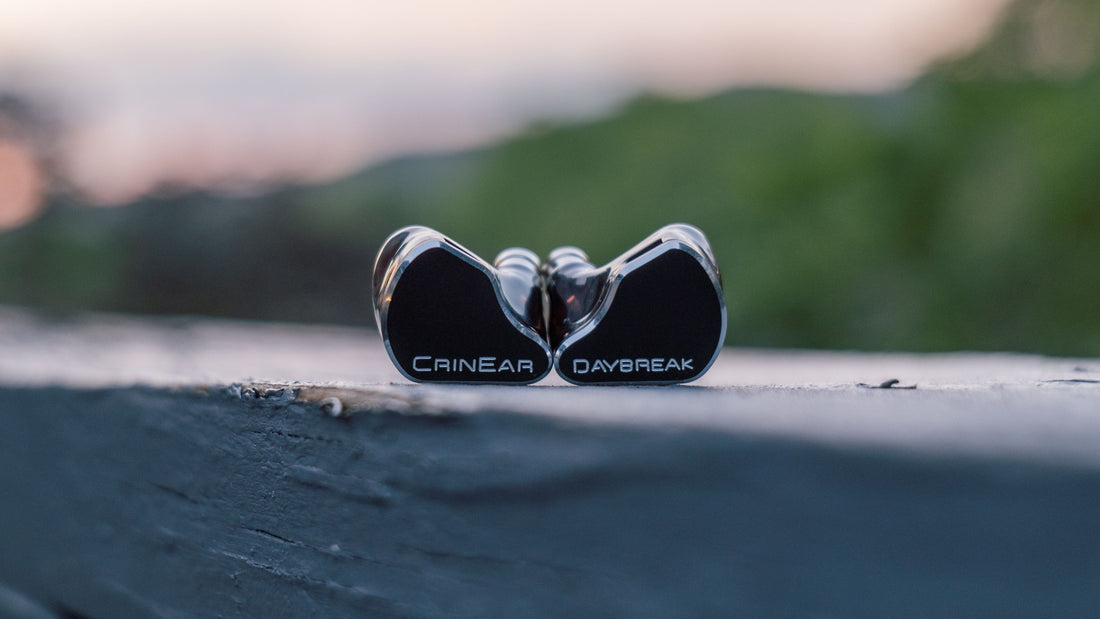
Even after quitting reviewing, Crinacle is still the single most popular reviewer of in-ear monitors (IEMs). If you’re not familiar with Crinacle, he’s not only known for his reviews, but also for bringing a ton of IEMs to market through collaborations with existing brands, and many of these collaborations became benchmarks at their price brackets upon release.
His last release Project META was his first limited release under CrinEar, his own self-made brand. META fell short of becoming the benchmark at its price due to its excessive brightness and slightly incoherent bass, so the question now with Crin’s first unlimited release Daybreak is: does it improve enough on the META’s faults to become a value benchmark at its price?
CrinEar Daybreak In-Ear Headphones
What we like
- Extremely well balanced, if still “enhanced” sound profile
- Combines the best parts of other similarly-tuned sets while minimizing downsides
- Very competitive price
What we don’t like
- Could be more comfortable
- Stock cable feels a bit cheap
- Sound could still be more neutral and less V-shaped
Build, Design, Comfort, & Accessories
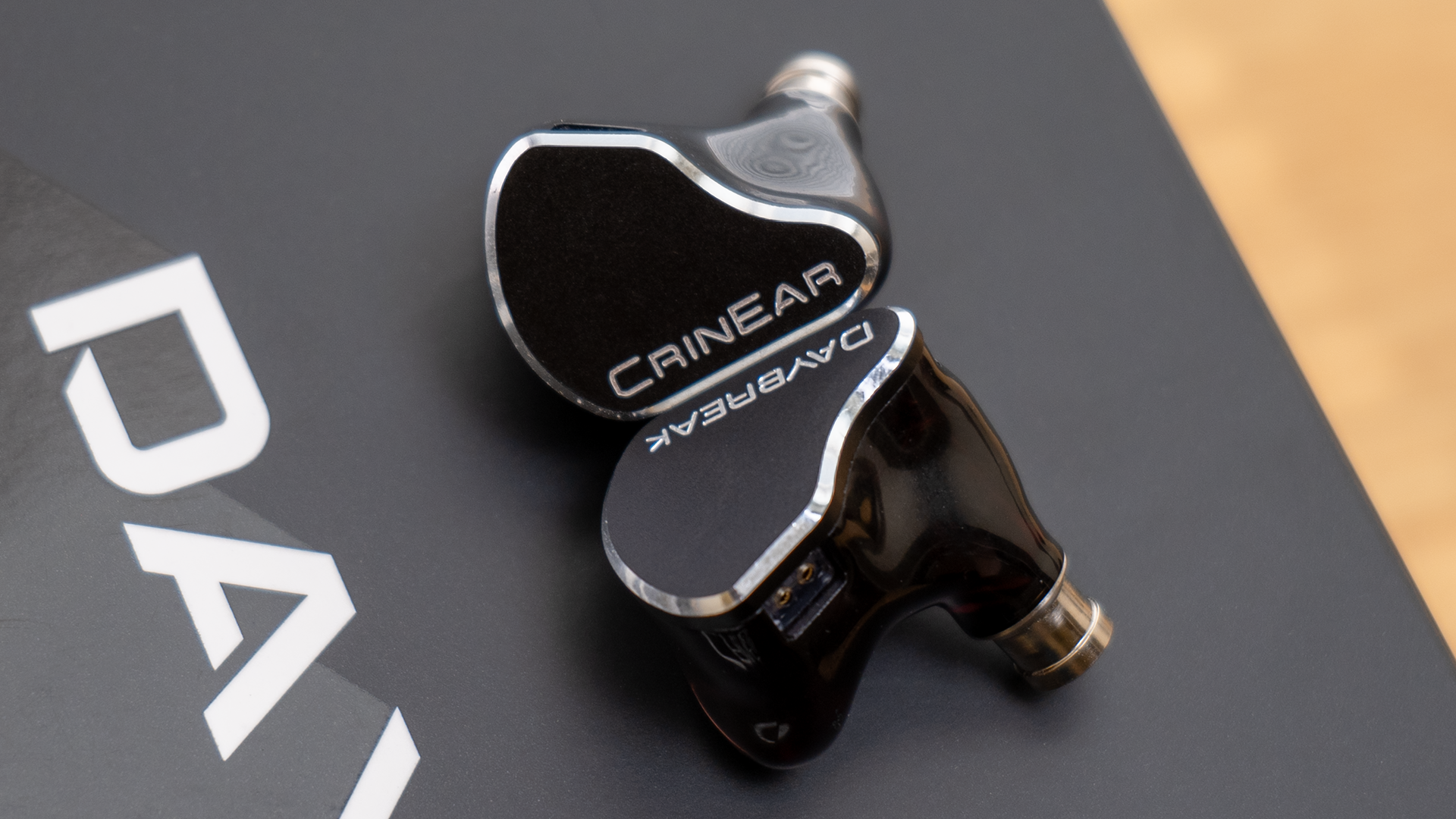
Starting with the build, Daybreak has a resin shell with a metal faceplate, which seems like a slightly better build than one typically gets at this price. The quality of the resin seems solid, not overly-thin or lightweight, and has no obvious cloudiness or bubbles, while the faceplate itself being metal is a nice premium-feeling touch that helps what may otherwise be a somewhat ordinary IEM feel a little bit elevated.
Design-wise, it’s a mixed bag for me. In terms of the positives, I think the combination of resin and metal could’ve ended up looking rather incoherent, but Daybreak strikes a nice visual balance between the near-imperceptible amber tone of the resin and the sleek monochrome modernity of the faceplate. Additionally, the visual coherence between the shell and included cable results in an overall package that looks very put together and intentional.
That said, I still don’t love the font that Crin is using for the branding on the CrinEar IEMs. Furthermore, I’m not fond of the brand name itself (CrinEar does not sound cool on its own), and it being on one of the shells features this name I’m displeased with fairly prominently. Daybreak is a cool IEM name, one of the coolest Crin’s had so far, and I would’ve preferred it just said “Daybreak” on one or both of the shells and the CrinEar branding was left only to be on the cable split.
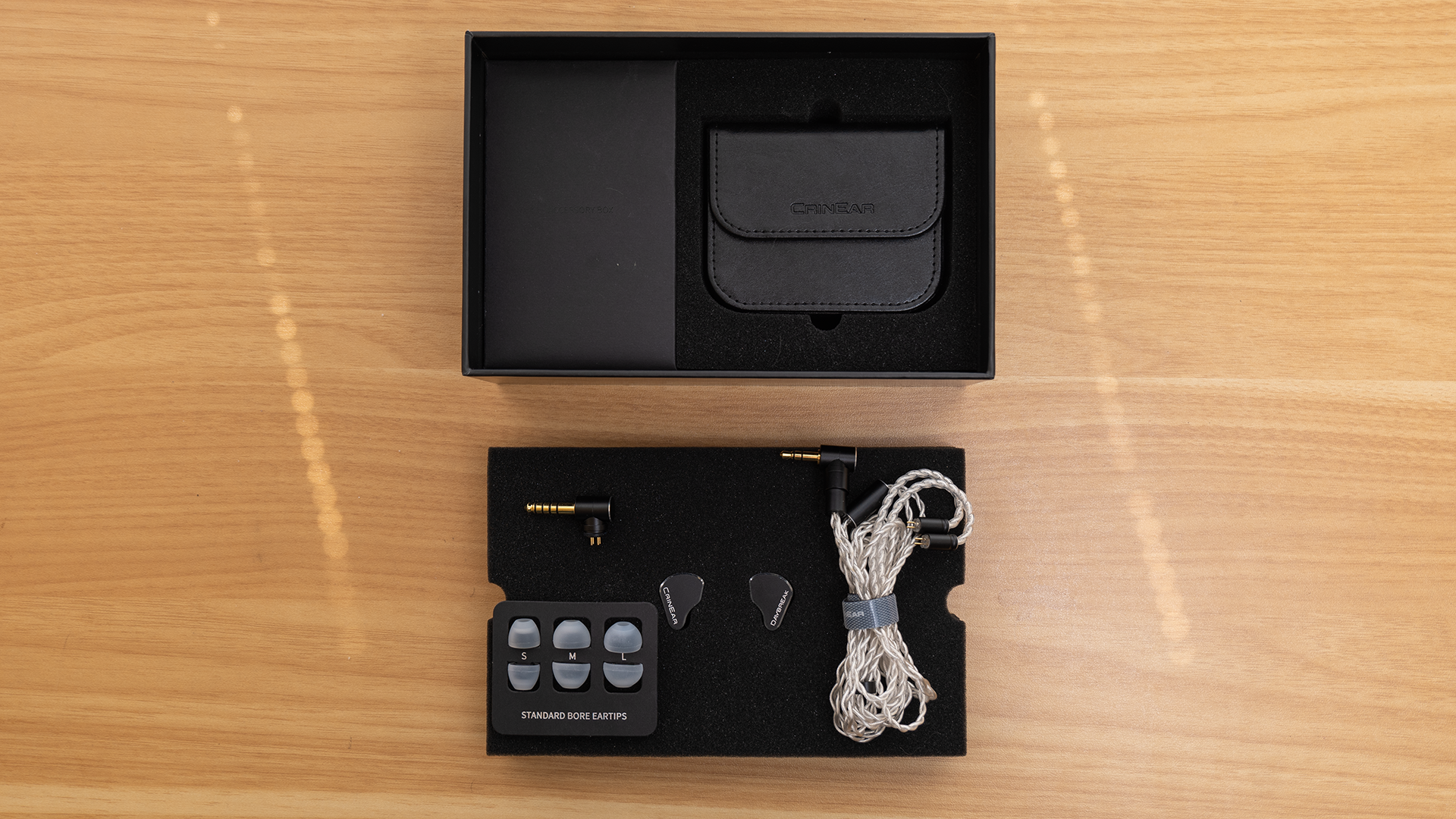
Accessories are scant, and I think this is where it starts to feel like Daybreak is a meaningfully less “premium” IEM. Similar to META, we only get one type of silicone tip in 3 sizes, with a fairly narrow-ish bore (referring to the diameter of the center hole). We’ll talk about this more later, but for now I’ll say: I think there being only one included tip is a meaningful downside to this package, and I also think the choice of tip was the wrong choice for this product.
We also get a leatherette-wrapped hardshell magnetic closure carrying case, and the included right angle 3.5mm (swappable to an included 4.4mm termination) 2-pin cable. The case is fine, but most of its protection comes from the fact that its outer walls are rigid, with not much internal padding. The cable is fairly handsome but also kind of austere in terms of feel.
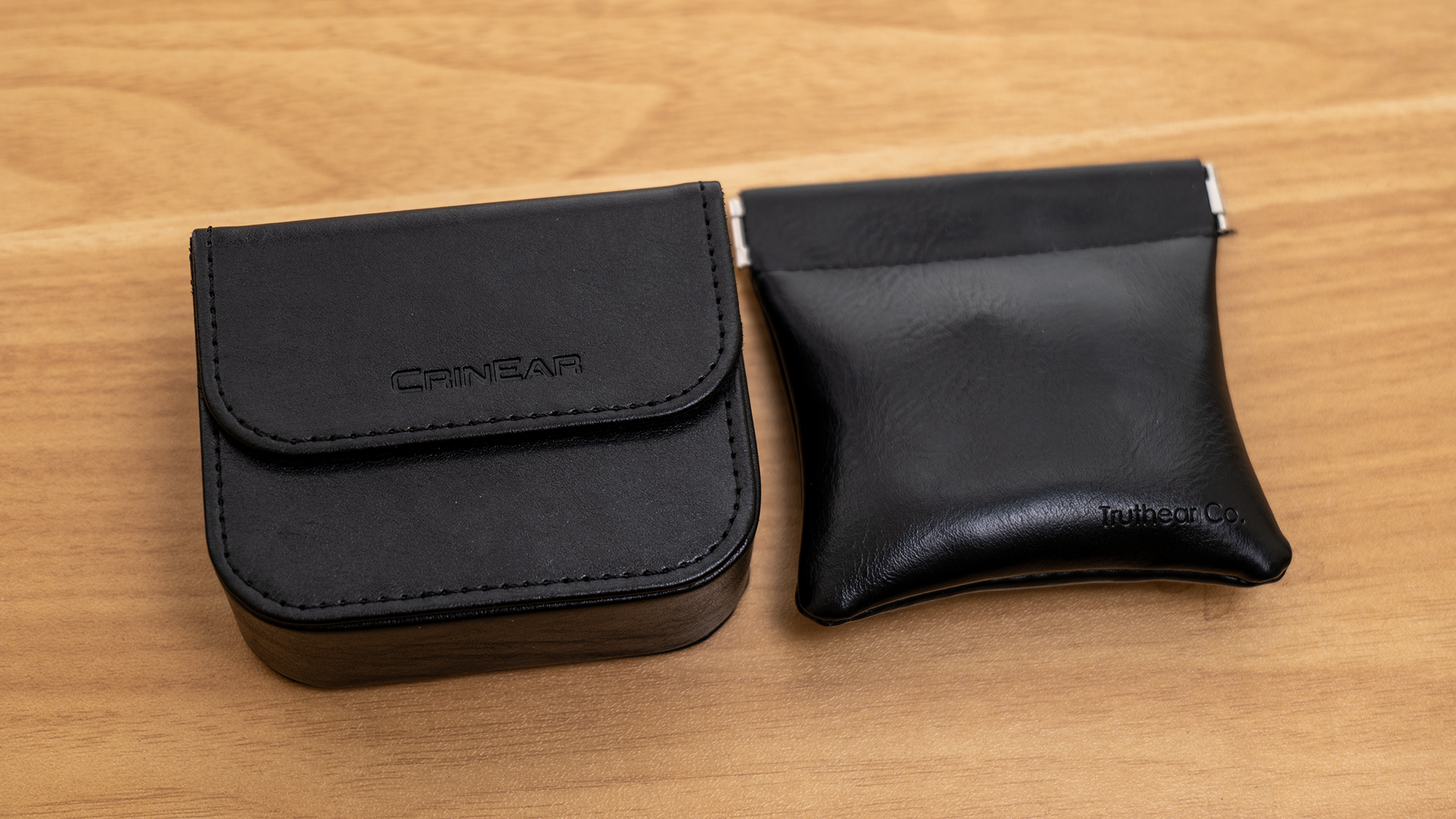
CrinEar Daybreak case left, Truthear GATe case right
As far as the case goes, I wish there were either more internal protection, or it were a bit smaller and less square. In my opinion a case should either be optimized for maximum protection or be optimized for maximum portability, and I feel the Daybreak’s case kind of sits in a no-man’s land where it’s neither portable/pocketable due to the size nor super protective. It’s fine for the price, but I honestly would’ve preferred something even smaller and simpler (like the pouch that comes with Truthear IEMs) if costs needed to be kept low for this part of the package.

The cable is handsome when wrapped, but doesn’t feel all that nice in the hand or while being used. It has a noticeable bit of shape memory to it above the Y-split which causes a slightly lumpy, disheveled appearance to the ends of the cable that lead to the earpieces, and there’s a bit of plastickiness to the handfeel as well. While it’s not nearly as bad as the cables that come with some other IEMs in this price bracket, I think some people may find this cable a bit lackluster.
Lastly, the comfort is good enough for this price bracket, better than the ultra-budget stuff, but not great for me personally. Daybreak sports a pseudo-custom molding typical of this kind of build profile, but I think the combination of the nozzle’s diameter, length, and angling means it’s not as comfortable as it could’ve been. If I had to narrow it down to one factor, I think I would prefer the nozzle to have a slightly more pronounced backward angle to conform better to the bend of the ear canal entrance.
Overall, Daybreak comes across like a $100 IEM in terms of the “feel”-based parts of the experience, but in terms of look and perceived build quality it comes off as closer to the $200-300 price bracket. It’s a handsome IEM overall, but I do think it’s a bit of a shame that people who want a nice feeling cable or better eartips are going to need to get that elsewhere.
The Eartip Problem
UPDATE: Crin has opted to add the KBEAR 4540 eartips mentioned as a preferred alternative to the retail packaging of the Daybreak—people buying Daybreak brand new will receive the eartips I’ve mentioned here.
I need to preface the sound section by talking about the included eartips. I’m going to keep this as brief as possible, it’s important I say my full piece here because it sets the stage for the rest of the review:
Daybreak is pretty harsh for me with the stock tips. The IEM itself seemingly has an inherent resonance directly at my pain point between 10-11 kHz, and this issue is magnified by the stock eartip being on the narrow side bore-wise. Narrower bore tips typically emphasize the ~10 kHz area, while de-emphasizing the uppermost treble. These tips paired with the Daybreak result in a fairly strong resonance in this region, though it sounds much more prominent in my ear than the graph below suggests:
Because wider bore tips tend to behave quite differently in this band, de-emphasizing mid treble while letting more upper treble through, I decided to try one of my favorite wide bore eartips as a first attempt to make the Daybreak a better sonic fit for me.
After equipping these “Coffee” (KBEAR 4540) eartips, the Daybreak transforms from another unremarkable, overly-bright “New Meta” IEM I didn’t really see myself using long-term… to one of the best IEMs I’ve heard.
The pain point in the 10-11 kHz band gets reduced to be within my tolerance zone, the lower treble cleans up a fair bit, and the uppermost treble energy gets pushed even further upward in frequency such that the Daybreak now sounds less harsh, more open, more full, and less defined by its treble overall. It just… sounds better in every way I can really think of.
I usually try to review an IEM using the manufacturer-intended eartips unless the intended eartips are truly terrible for one reason or another. For example, I refused to review the Truthear Zero: Blue 2 with the foam tips it was apparently intended to be used with, because foam tips make me physically cringe.
With all of the other IEMs Daybreak is likely to be compared to, like the Kiwi Ears KE4, DUNU DaVinci, CrinEar Project META, or Moondrop DUSK, tip rolling either did nothing to improve the sound quality, or made it worse, so I never had to bother entertaining the fact that a non-stock tip would be better to review with.
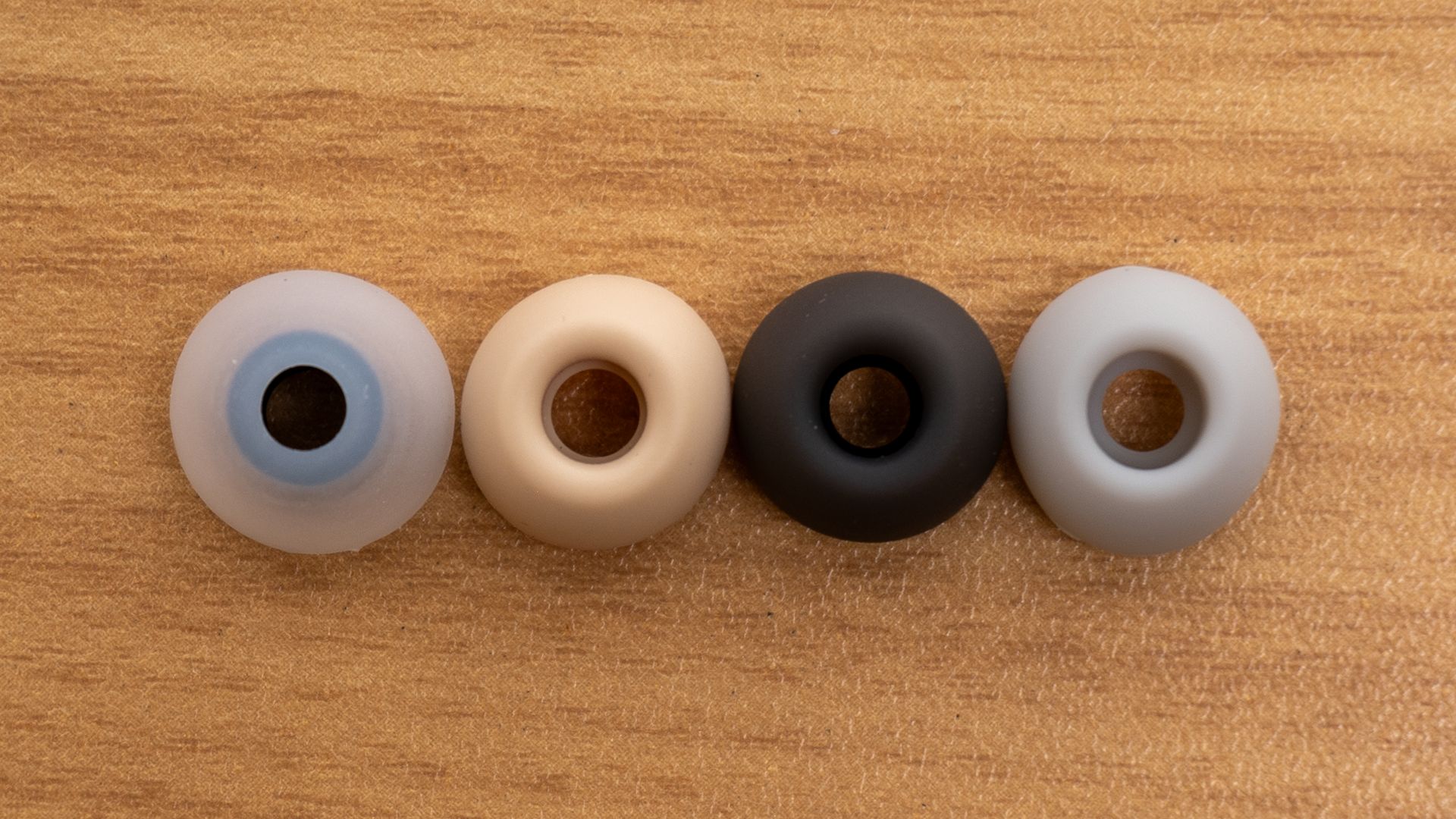
Stock eartip far left, “Coffee” wide bore ear tip middle-left, I/O Sogno wide bore tip middle-right, Hisenior Mega5EST wide bore tip far right
But with Daybreak, the Coffee eartips improved my experience so much more dramatically than any of the above cases, not only fixing the treble, but tilting the entirety of the perceived response to be much more palatable for me.
So while I might get flak for this, I am opting to review the Daybreak with my preferred Coffee eartips, while making it clear that the choice to only include one pair of eartips was a bad decision on Crin’s part.
I should also note: the Coffee tips are really just a generic short-core wide bore tip that are also included stock with IEMs of a wide range of prices like the Truthear GATe, I/O Sogno, and Hisenior Mega5EST. So this eartip might already be one readers have in their collection, but it’s also very likely that any wider-than-stock bored eartip—like Dunu S&S, Divinus Velvet, or Eletech Baroque—will have similar effects to the Coffee eartip, so readers should definitely try whatever wider bore eartips they have on hand if they find the mid-treble of the Daybreak to be a problem.
Okay, onto the sound.
Sound
Bass instrument reproduction is one of the foremost areas I’ve found sets tuned like Daybreak to sound a bit lacking. While Daybreak doesn’t outright break any molds in this regard, I do find it strikes one of the best balances between quantity and quality so far. The bass is extended, prominent, warm, and has ample “boom”, but it’s just reserved enough not to totally overshadow the midrange clarity. This region still conveys more nimble arrangements with enough accuracy for me not to be bothered, while still being firmly bassy.
Kick drum attack does take a bit of a backseat to its decay, and said decay is a bit on the long side for my taste, but Daybreak still has sufficient transient integrity to handle faster performances with precision. Bass guitars sound a bit overly-bloomy and large, but only slightly. They still thankfully have the sufficient upper midrange presence and “throatiness” for more lithe bass parts to sound defined and well-represented.
Moving into midrange elements like piano, vocals, guitars, horns, strings… Daybreak is exceptional, and I mean as close to perfect as I’ve heard in IEMs. There’s not a single thing I can fault with it, and literally every single midrange-focused element I heard with this IEM sounded incredibly normal.
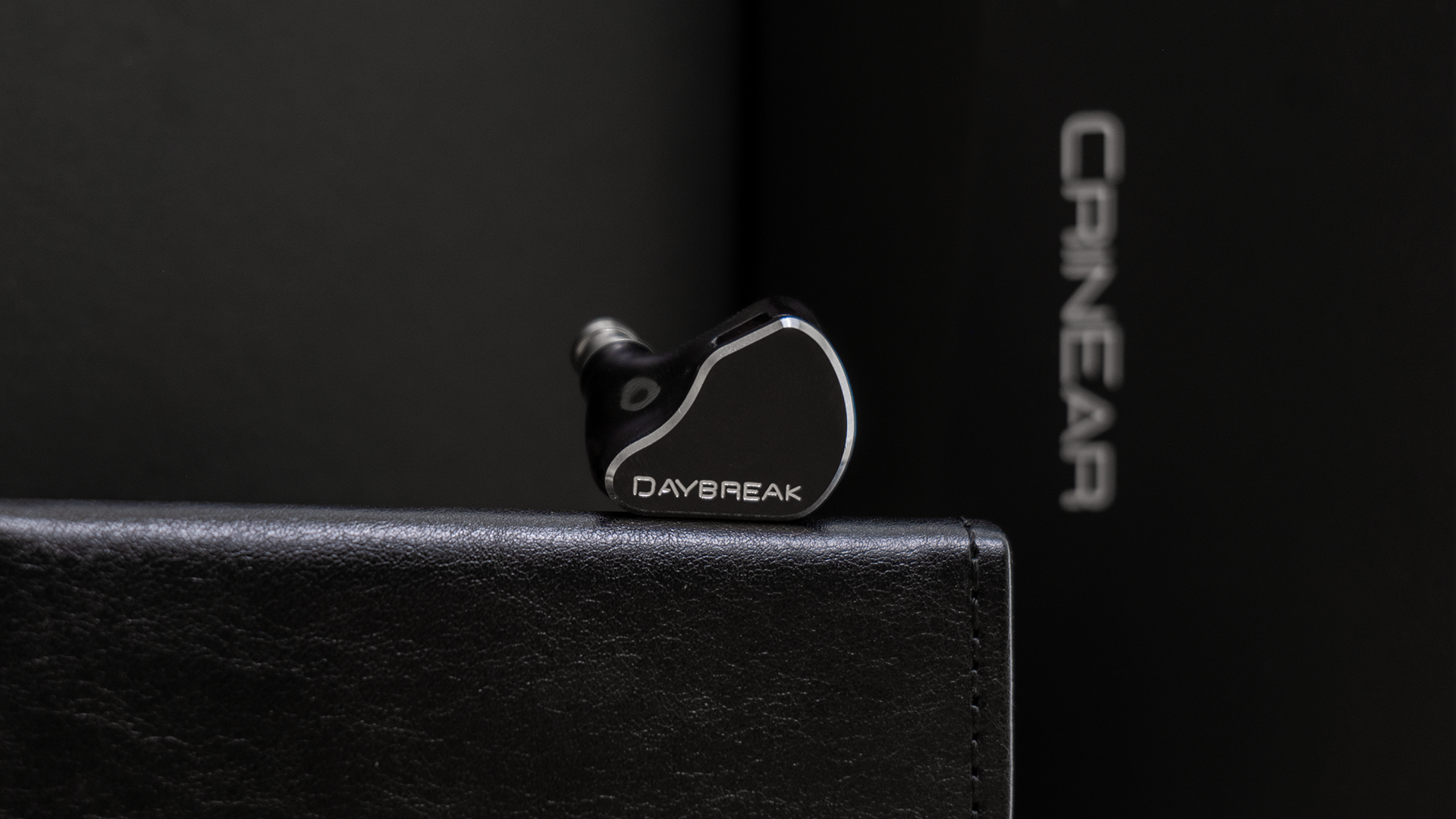
Now, a potential downside for some people (not me) is that because it’s so bereft of coloration, it may lack the “technicalities” arising from frequency response quirks highlighting specific aspects of the music more than others. You won’t find the textural aggression for bass, or the spotlighting effect for female vocals that arises from the 1-2 kHz boost typically found in other IEMs, for example. But for this reviewer, that boost is the Achilles heel of most other IEMs, and the evenness of attention given to all aspects of the midrange is Daybreak’s greatest strength.
One part I really like about the presentation of midrange instruments is how the midrange integrates with the lower treble, and this is another area I think Daybreak handles exceptionally well. Daybreak’s upward transition from the 3 kHz area into the 5-6 kHz area is probably the smoothest transition I’ve heard in an IEM. The clack of cymbals, the piercing click of kick drums, and the uppermost treble of electric guitars balances beautifully with everything below it such that most things with energy in this band just sound right. A lot of IEMs, even those tuned with the “New Meta” in mind, haven’t nailed this region quite as well as Daybreak does.
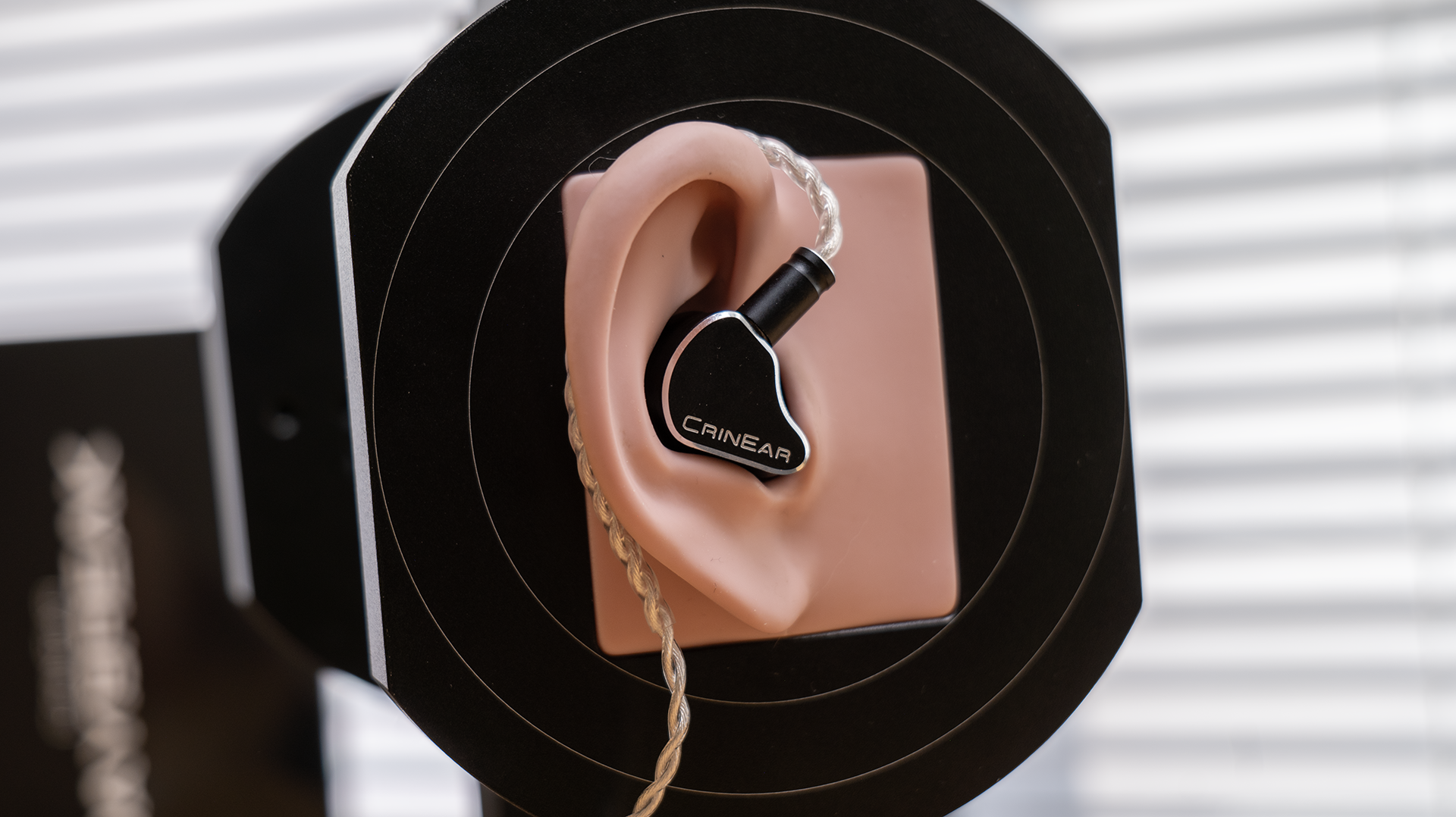
Finally, the upper treble, where most IEMs with similarly excellent midrange end up falling flat on their face for me. Daybreak with stock tips certainly still has a cloying brightness just like the others, so for those not open to trying aftermarket tips, I have to advise caution to the readers considering buying the Daybreak. For all of its bass competence and midrange excellence, with stock tips Daybreak is still a set that leans too bright and glarey for me, such that it becomes hard to enjoy what it does best and hard to recommend as a safe option.
But with the Coffee tips… Daybreak is one of the only IEMs I’ve ever come across whose upper treble boost doesn’t totally ruin the perception of bass and midrange. While the overall level is still elevated above what I’d typically prefer (and with EQ, I’d still opt to shelve the > 10 kHz area down a few dB), even this incredibly treble-sensitive reviewer is totally fine to listen and enjoy Daybreak for extended periods of time… and honestly, it’s one of the first IEMs I’ve ever encountered where I actually get to enjoy what it seems other people enjoy about what they call “treble extension.”

To clarify, upper treble elevations typically just sound harsh to me, so it’s one of the first areas that ruins my enjoyment of an IEM, making me unable to enjoy any extra perceptions of detail, speed, or airiness that boosts in this region can elicit. But with the Coffee tips, it seems like the Daybreak’s upper treble elevation avoids just the right spots and boosts just the right amount such that the treble boost never reaches the level of harsh, which allows me to enjoy those positive aspects of boosted treble in a way I’ve not really been able to previously.
Daybreak is probably the first IEM I’ve encountered where upper treble coloration was not only not an immediate disqualifier, but something I’d actually grown to like about the IEM’s presentation. The upper treble boost makes acoustic guitars present with additional overtone complexity, and adds an air around vocalists that helps separate them from the rest of the mix in an interesting way. While I’m still not a huge fan of how this coloration causes cymbals to be a bit overly sizzly and lacking in weight, overall I think Daybreak’s treble presentation is probably the most balanced and sensible approach to “treble emphasized” I’ve experienced in IEMs.
What that leaves us with is an IEM that, overall, sounds exceptionally balanced even if it still has moderate colorations (excess bass and treble) that I would do without if given the choice. But now the question remains: how does it stack up to all of its competition that follows a similar approach to tuning.
Comparisons to other “New Meta” IEMs
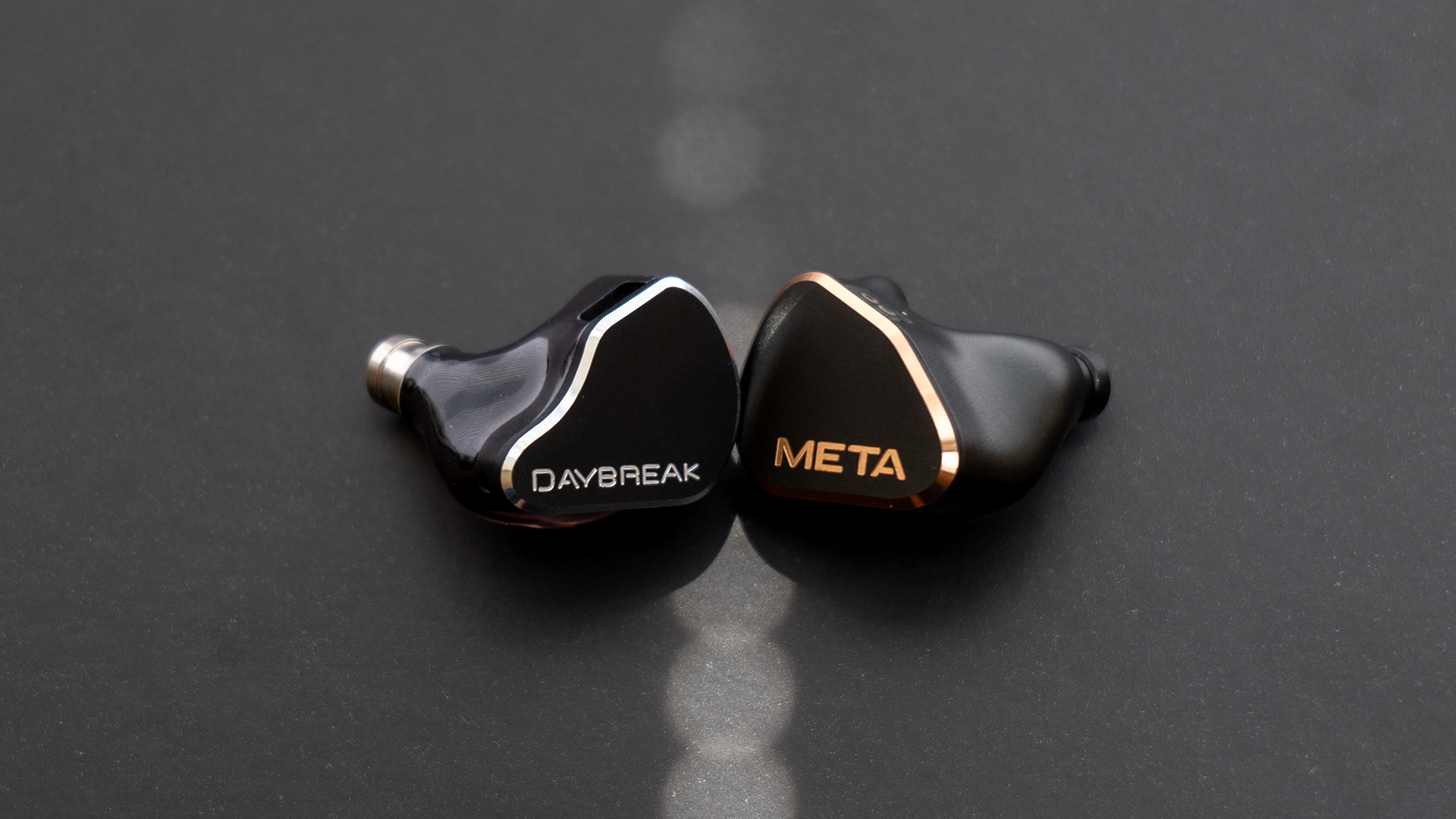
Vs. CrinEar Project META
Unless you’re like Resolve and find yourself to prefer both less eargain and more upper treble in IEMs, I really don’t see an argument in favor of META over Daybreak based purely on sound quality. While yes, I do think META has better accessories, slightly better comfort, and a better look, Daybreak easily takes the cake sonically.
Daybreak has a more coherent integration both between bass and midrange due to less scoop in the low midrange, and between upper midrange and the low treble due to how smooth and resonance-free the lower treble is. Daybreak also has a much smoother and more flexible upper treble response, which means if someone does want to experiment with eartips, the Daybreak is easily the better choice for a variety of sensitivities.
Of course, the Daybreak is also currently available for sale, whereas the Project META is gone for good, which makes the prospect of buying one or the other a fairly moot question, but even so: it’s my belief that the Daybreak is a unilaterally better sounding product, even with the stock tips, and I think it’s great that it’s also the less expensive between the two.
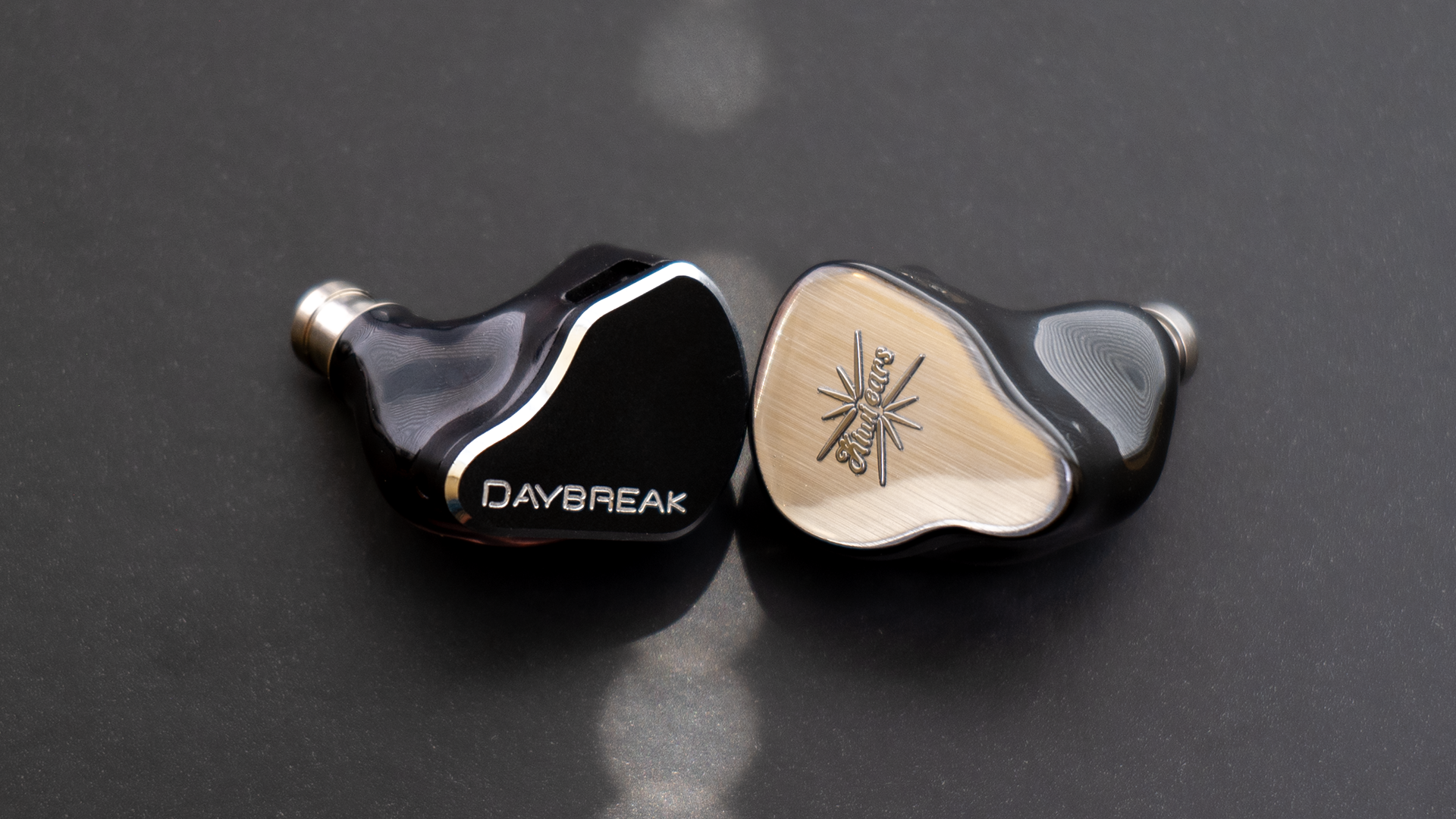
Vs. Kiwi Ears KE4
The story is much the same with the KE4, though I think Daybreak and KE4 are on more even footing for included accessories while the Daybreak wins in the looks department.
But for sound… there’s little contest here. Daybreak is less cloyingly bass-forward and slow, while also much more reasonable in the upper treble. Like META, KE4 was incredibly bright in the treble with anything but stock tips (and even with stock tips it was very bright for me).
One enjoyable aspect about KE4 is that the midrange is warmer than Daybreak, which offers a bit more of a relaxed and less harsh presentation which may work better if a listener has a library with less-competent or older recordings.
But other than that specific case, I don’t really see an argument for KE4 over Daybreak unless the listener knows for certain they want a more dramatically V-shaped response. I’ll also add that with the stock tips, I do have a slight preference for KE4 as I find its much warmer bass and midrange to better balance its excess treble than Daybreak’s more “middle of the road” tuning under 3 kHz.

Vs. DUNU Da Vinci
Relative to the other sets with this tuning approach, the Da Vinci had the treble profile that worked best for me due to having a less forward 9 kHz region than the others… but it was still way too bright for me. It also had probably the worst bass of any of them due to just how over-boosted the bass was. I am not a basshead at all, so the Da Vinci’s incredibly generous bass response was its biggest weakness.
What’s interesting about the Daybreak is that it has a much more reasonable bass response, but an even better treble response. Even Da Vinci was my choice for treble before, it was simply because it was the least bad option. By contrast, the Daybreak actually sounds good in the treble, while also having a better bass response. The midrange is more of a tossup, but I also slightly prefer the Daybreak’s midrange too, so… seems like it’s another sweep for Daybreak.
With stock tips, it becomes a bit less clear of a sweep, as Daybreak’s treble goes from some of the best to some of the worst, so I’d say Da Vinci becomes my preference above 5 kHz while the Daybreak still has the better midrange and bass.
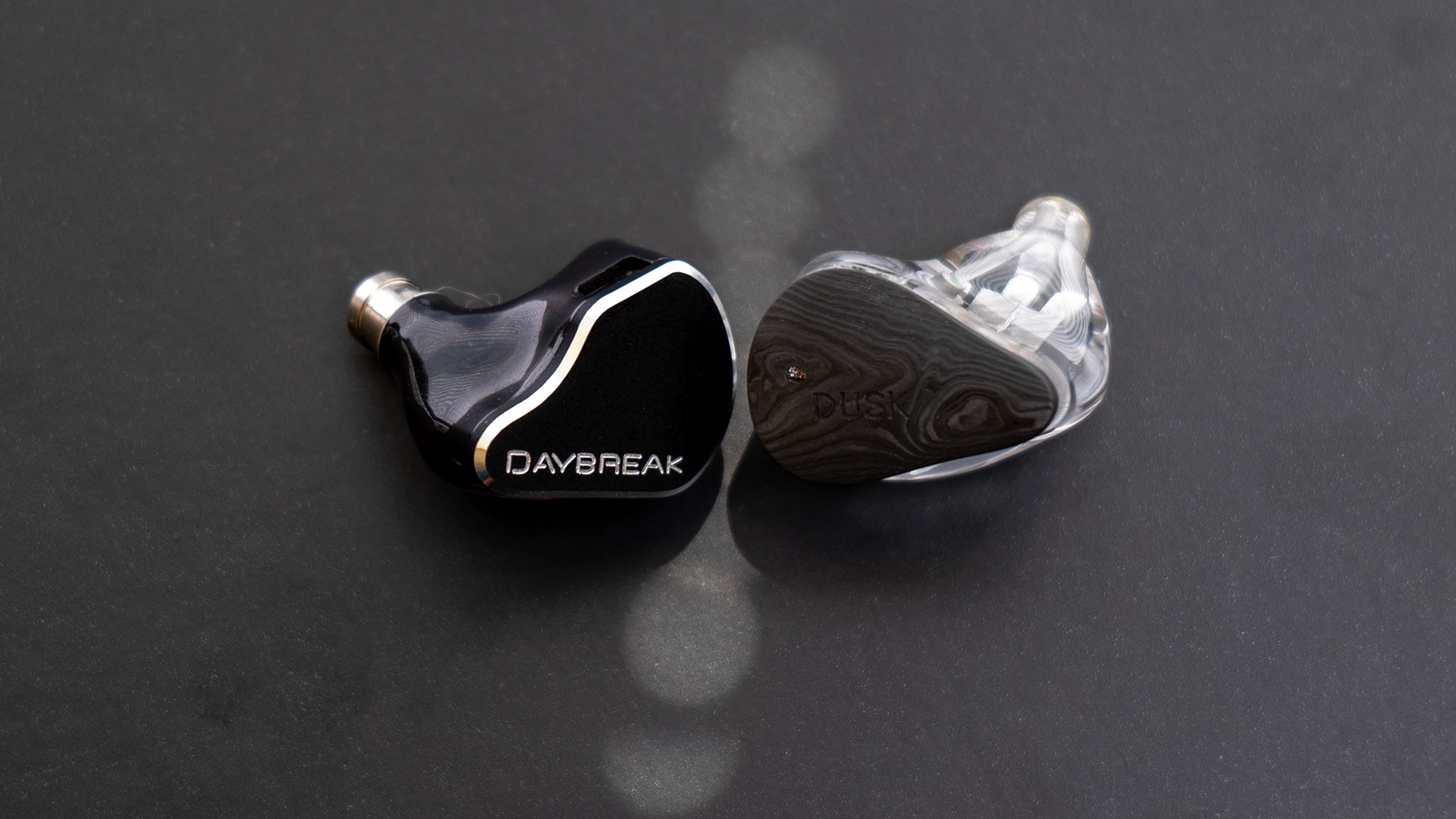
Vs. Moondrop DUSK
I was probably one of the only people to review this IEM negatively, both because the FreeDSP cable was a nightmare to use, but also because even with the “intended” sound profile, DUSK was just way too bassy and incredibly bright for me. In fact, the DUSK’s treble working so poorly for me was part of why I was a bit worried about Daybreak also using microplanars in the treble. Thankfully, the worry amounted to nothing, and Daybreak’s treble is much more reasonable.
While some people are probably still going to say the DUSK is better, I firmly prefer the Daybreak. Its bass comes across as much less overwhelming than DUSK’s, while the upper treble has the upper treble emphasis while not making me deal with the plasticky harshness that was present in DUSK even with its treble cut filter applied.
It doesn’t help that the DUSK is more expensive, way less comfortable, and either requires using an outright bad EQ cable or external EQ to get to sound as it’s intended… but even without those factors, I believe Daybreak just sounds better, even with stock tips.

Vs. Hisenior Mega5EST
I’d recently gotten another Mega5EST unit in to test to verify that Hisenior had reverted to the original tuning after a stealth revision earlier this year (and I can confirm, all units sold by Headphones.com at least will be the original pre-revision tuning).
After having time with the Mega5EST again, I can verify that I do still like it quite a bit… but I actually still like Daybreak even more.
What Daybreak really does better than the Mega5EST is coherency. Overall it is a more “linear” and put-together sounding IEM, where bass sounds less disjointed from the midrange and midrange sound less disjointed from the treble. I also find Daybreak fuller, more textured, and less “sleepy” sounding than the Mega5EST sounds, while they actually have a similar treble profile that I’d say is “bright, but not fatiguing.”
What’s really interesting is the price and comfort differential here. Daybreak is less than half the price of the Mega5EST and, for me at least, slightly more comfortable. Now while the Mega5EST has a much better accessories package, I can’t help but accept that the Daybreak not only competes when it comes to sound quality, but actually exceeds Mega5EST with the same tips on both (Mega5EST’s wide bore tips are identical to Coffee tips).

Conclusion
While this review (especially the comparison section) was pretty much a praise-fest, I think it’s important to remind the reader that there are still caveats for Daybreak that may preclude an immediate hype purchase.
The stock tuning with the included tips really doesn’t butter my biscuit significantly more than the other sets with similar tuning (and similar compromises). So I think if buyers aren’t willing to entertain tip rolling, Daybreak becomes much less obvious of a choice in this price bracket. I also think the included accessories are clearly indicative of a less expensive product and leave a bit to be desired.
But with those caveats in mind, a simple tip swap turned Daybreak from just another V-shape IEM into what I think is probably the logical conclusion of this “V-shape with neutral mids” approach to tuning we’ve been getting shoved down our throats over the past year. It is easily the most balanced of the lot, while also being the least expensive of any of them.
While I do really think Crin erred in not offering another tip choice here, I think Daybreak represents what is unequivocally his strongest sounding product yet. It is his first that truly resonates with me, while also earnestly representing a version of this approach to tuning that is actually cohesive and reasonable from top to bottom.
Daybreak is one of the least compromised IEMs I’ve heard at any price, so is it The New Benchmark™? Definitely.
With Daybreak, listeners receive a sound that still has exciting colorations people may prefer, but done moderately enough to not overshadow the midrange excellence that makes this tuning approach so compelling. It’s a hard equilibrium to maintain, but I think Daybreak is the first one of these IEMs to really strike a balance that makes it easy to recommend. Just make sure you try other tips if the treble ends up bothering you.

